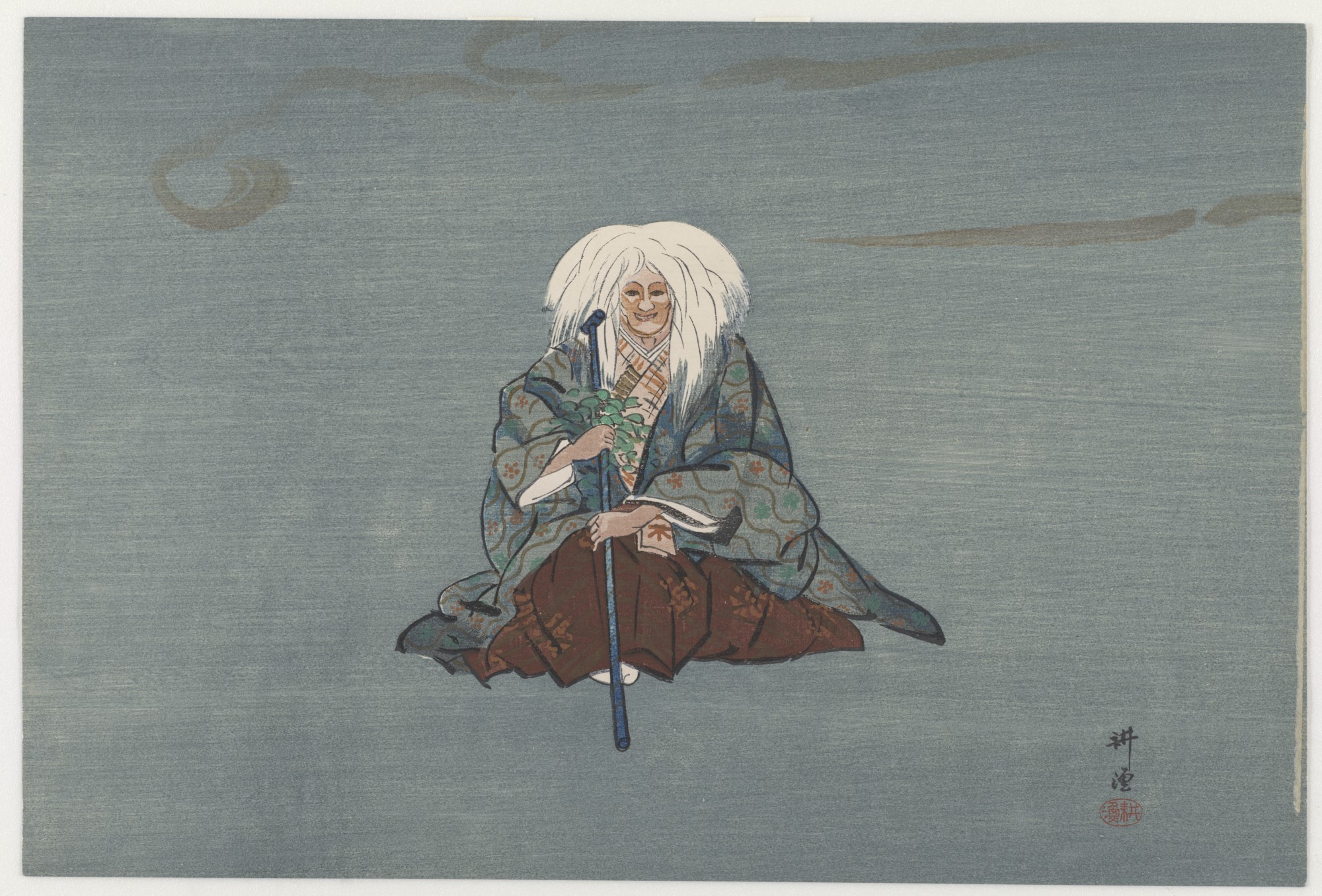Click or tap on the blue flames to learn more about the techniques and details that brought these stories to life for their audiences.
More object information
In the play Yamanba, an actor meets the subject of her main role—the storied mountain witch, Yamanba. At the beginning of the play, a group of retainers and servants introduces a dancer famous for her song and dance impersonating the witch. As they travel, the sky suddenly gets dark. A woman approaches them and offers accommodation. The woman reveals she is Yamanba and that she feels slighted someone portraying her for so many years has never bothered to meet her. Yamanba asks for the dance to be performed by moonlight. Enthralled by seeing her own dance, the witch takes over and dances in rapture before abruptly disappearing forever.
lick or tap on the blue flames to learn more about the techniques and details that brought these stories to life for their audiences.
This print places the female demon Yamanba right in the center of the vertical image. She is looking straight at the viewer at eye level. This vantage point and interaction with the viewer is very different from an audience’s experience of an actual noh stage. The stage is usually elevated, and viewers look up to the actors, creating a lofty distance. Tsukioka Kōgyo deletes that distance and instead puts us right into the demon’s line of sight.
Return to objectThe climax of the play Yamanba is a dance performed under the moonlight, since only in the spectral nighttime light will the demon Yamanba reveal her true form. Tsukioka Kōgyo and his carver and printer, whose names we do not know, captured the ghostly atmosphere of the witching hour by way of miasmic bands of clouds and dark lines in the background that result from imprinting the printing block’s wood grain. This special technique appears in many of Kōgyo’s prints and reminds us of the material of choice in traditional Japanese prints.
Return to objectThe play Yamanba deals with a dancer and impersonator meeting the real-life model of her most famous performance—the mountain demon Yamanba. During a dark night in a mysterious mountain hut, the dancer meets her eerie idol. Yamanba conveys that she feels slighted someone portraying her for so many years has never bothered to say hello. Yamanba asks for the woman to perform her signature dance. As the performer dances, Yamanba joins in. Here, the witch can be seen at the moment right before she begins to dance, looking at us as judgmentally as she scrutinized the performer’s dancing. For a radically different impression of Yamanba, see this print by Tsukioka Yoshitoshi.
Return to objectCostumes in noh theater always carry meaning. Their patterns and coloration are often intended to enhance the plot and add a subtle yet recognizable layer of associations. Even though noh costumes are some of the most expensive traditional Japanese textiles, they can also evoke raggedness. In spite of being woven in complex embroidery, in Yamanba’s case, the earthy colors and floral patterns evoke her disheveled, mountain-dwelling existence. Likewise, the white wig completes her appearance as an older woman formed by the elements atop her mountain.
Return to objectThe prints in Tsukioka Kōgyo’s series One Hundred Noh Plays are at the intersection of print and painting. The anonymous carver and printer of Kōgyo’s works captured the artist’s drawings line by line and made the prints seem as if they were hand-drawn—an illusion of a bespoke product that would have appealed to the people buying Kōgyo’s prints.
Return to object



